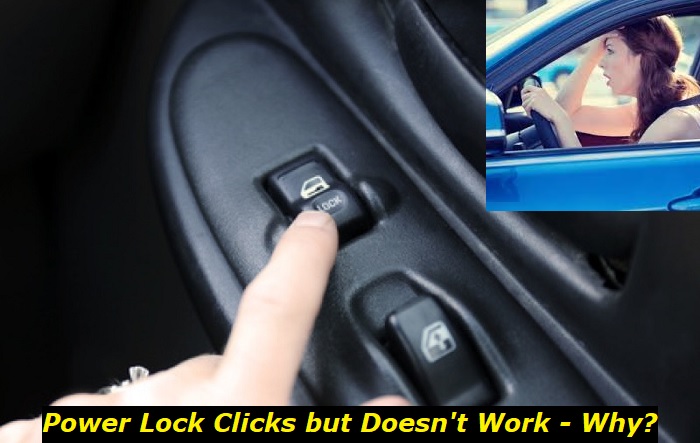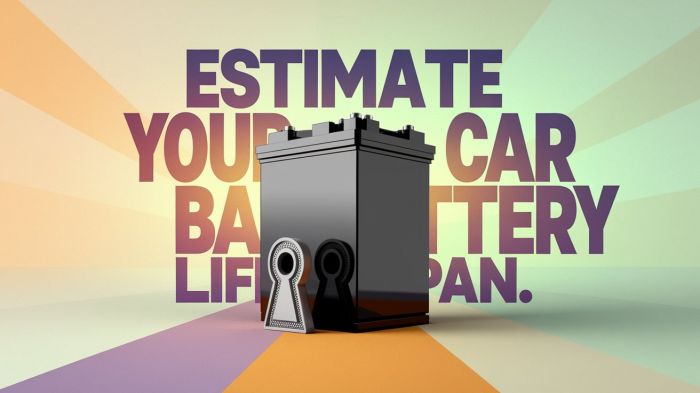Car power door locks are designed to offer convenience and a sense of security to the car owner. It is a mechanism that provides remote access or one-button central locking/unlocking of all the doors simultaneously. Through door consoles, switches, remote buttons on key fobs, or smartphone applications, the so-called central locking system is a simple and secure system that every car owner enjoys.
No-power problems highlights
- Level of urgency:high
- DIY inspection:possible but complicated
- DIY repairs:possible but often complicated
- Can you drive?no
- Price of repairs:$50 - $250
- If ignored:no-start, nothing works
- Ways to fix:check the battery, connections, fuses

How the power lock works
The power lock uses a combination of different processes to lock or unlock the doors. The locking/unlocking of the car doors can be done by pressing the button in the car, using a lock combination on the outside of the door, or using the button in the fob remote. This process sends a signal/power to the door actuators that either lock/unlock the doors. However, the entire process must pass through the car's body controller unit.
The body controller unit is a computerized device that actualizes all regular activities that a driver does to make the car friendlier and easier to use. The activities include the myriad of small tasks that a driver performs before and after driving.
The body controller checks the lock/unlock signal from different sources from within or outside the vehicle. Once it receives the correct code, radio signal, or digital code, from any of the sources, it then activates the actuator by sending an electric signal to lock/unlock the door/s.
The actuator is responsible for the actual locking/unlocking of the doors. The actuator solenoids which receive the power voltage do the actual locking. To do this, the body controller sends a power voltage to the two terminal ends of the solenoid. This then releases a click sound to alert you that the door has been locked.
However, in some instances, the click sound will be heard but the door will not have been locked. The failure to lock could be caused by a faulty switch, wiring issues, mechanical problems, or problems with the solenoid.
If you find that your locking system is inoperative, you should carry out a diagnosis to determine the cause. The following are some of the main culprits of such malfunctions.
1) Faulty fuse
A faulty fuse could be the cause of the locking problem. The fuse may fail to transmit power to the solenoids or may be sending a low voltage that is not enough to move the actuator lever. The doors solely rely on the fuses to transmit the electrical command to each door locking mechanism. The door lock fuses are usually located in the fuse box under the passenger's glove compartment. Thus, the clicking sound that you hear is an incomplete one since the solenoid does not complete the actuator response.
To fix this problem, check the fuse box to ascertain whether the door fuses are working. Use the car's manual, or the fuse diagram to locate the door fuse and then replace them if they are faulty.
2) Wiring issues
If your car door lock is not responding to the fob or the lock/unlock button, there could be a wiring problem either in the solenoid or other connectors in the actuators. It could be that the electric connection to the actuator is getting lost somewhere around the lock. The car wiring system is a complex one and any loose wiring or broken circuits may affect your locking system.
Detecting a wiring defect requires the use of voltage meters and other electrical gadgets. However, you can check by repeatedly trying to lock and unlock your door either with the fob, lock button or lock/unlock code. If the lock works intermittently, then, the most probable problem is a broken wire within the lock circuit.
Again, the faulty solenoid can easily be diagnosed if you discover that some doors are locking while one or two are not. This is an indicator that the specific door's solenoid is faulty and needs to be checked.
Solution
You could perform a simple DIY test by unscrewing the inside panel of your door to expose the solenoid, actuator, or connectors. Using a voltmeter, test the existing wires to see if they have enough electric current. The wire to the solenoid should have 12 volts for opening and the polarity should reverse when you perform the unlock procedure. These should let you know whether the wires are transmitting current to the solenoid. If the solenoid is faulty, it requires repair or replacement since it is the solenoid mechanism that locks the doors. If you determine that the problem could be wiring-related, you will require a wiring expert to locate the problem and fix it.
3) Extreme Cold weather
The doors in your car are not necessarily fully moisture-proof. Extremely cold weather may freeze the door and by extension, cause the lock linkages to also freeze. Such a scenario will limit the level of functionality of the locks and will cause difficulties locking the doors electrically. The lock actuators and other levers become frozen and stuck within their zones.
To confirm whether the lock solenoid or mechanism is frozen, open the inside panel of each door to access the locked console. Put your car on and then try to manually (as well as using the auto lock button) move the lock forward and backward for some time. If you notice the lock attempting to move, then it could be that it is frozen and the electric current is unable to fully make it move to lock. The slight movement is the click sound you hear but the locking does not take place.
Solution
To defrost the lock, you could get a hairdryer and heat the lock for some time until you are certain the freeze has thawed away. Alternatively, you could use a lighter to warm up the lock (but take care not to ignite the paintwork or other materials) or apply a lock de-icer to unfreeze it. Afterwards, try locking the door normally through your usual process.
4) Dead key fob battery
Your doors' failure to lock could be a result of your key fob not working properly. The key fob's battery could be dead and thus is unable to send the right signal/code to the door lock for it to click shut. Before you check any other area, confirm that the key fob is functional. Replace the battery and then check whether the door will lock.
Sometimes, the key fob itself might be faulty. This, therefore, means the key fob does not communicate properly with the locks at the doors. To determine whether the key fob is in good working condition, take it to a dealer who will use computerized controls to program/re-program the fob back to its working status. If the reprogramming is not feasible, then a new key fob needs to be purchased and programmed to work with your car locks.
It is important to determine whether it is one door or several that are not locking. If some lock while others don't, then the problem could be related to a defective switch in the circuit system for the particular door that is not locking. Listen keenly as you lock the doors to determine the specific door that is affected by the failure. Upon identifying the defective door lock, then carry out the DIY diagnosis or visit your mechanic who can pinpoint the specific problem and then fix it.
5) Rust
Another possible cause could be rusty lever/actuator ends in the locks. When rust collects in these areas, the lock may fail to move fully to complete the locking process. The lock may move (hence the click) but get stuck before it fully engages with the other end. The rust may also make the lock latch get stuck in the hook. To fix the problem, Try and loosen the lock screws and align the latch with the strike plate. Alternatively, get a multi-purpose spray lubricant and direct it to the inside of the lock system. Leave the lock to idle for about ten minutes and then try locking/unlocking it normally.
6) Obstructions
There may be physical obstructions within the lock mechanism that prevents it from fully locking. The obstructions could arise from worn-out rubber pieces, dirt, or grime that collects in the lock over time. The easiest DIY is using lubricants to clean the lock mechanisms to try and wipe out the obstructions. However, it is recommended that you visit a locksmith to carry out a detailed checking and thorough cleaning of the lock mechanism.
Sometimes, the locking system may be completely damaged and this calls for a total replacement.
About the authors
The CarAraC research team is composed of seasoned auto mechanics and automotive industry professionals, including individuals with advanced degrees and certifications in their field. Our team members boast prestigious credentials, reflecting their extensive knowledge and skills. These qualifications include: IMI: Institute of the Motor Industry, ASE-Certified Master Automobile Technicians; Coventry University, Graduate of MA in Automotive Journalism; Politecnico di Torino, Italy, MS Automotive Engineering; Ss. Cyril and Methodius University in Skopje, Mechanical University in Skopje; TOC Automotive College; DHA Suffa University, Department of Mechanical Engineering






Add comment